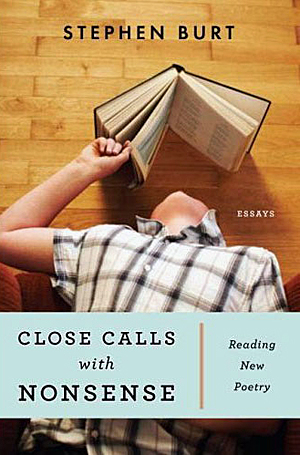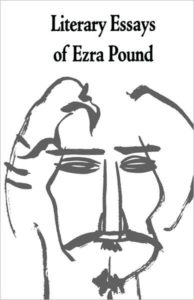How to Read [Poetry], Then and Now

When I think about instructions for reading poetry, I think of all the intricacies in modern life that make reading poetry difficult: the emphasis on efficiency, certainty, and mastery. I think of the frustrated modern delusion that most difficult things can be achieved in three, maybe four, calculated steps. I think of how I, like most modern humans, am comforted by the idea that my own obedience to the instruction manual guarantees me success.
But perhaps instructions for reading poetry deserve to be read in the manner in which their subject deserves to be read: with time, nuance, and complexity. This article is interested in how some of poetry’s most profound gatekeepers—Ezra Pound and Stephen Burt—demonstrate a method and a model for modern reading beginning with their instructions.
Like much of his modernist project, Ezra Pound’s 1929 essay “How to Read”¹ re-conceptualizes a literary past and future. As he reconstructs a literary memory divided into the inventors, masters, and diluters (“The men who do more or less good work in the more or less good style of a period” [23]), Pound builds a new curriculum for readers. He redirects a future scholarship to search for literary craft and invention rather than biography and literary history. He defends the purpose of his project: it is not a demand for anyone to “read more books, but to allow [people] to read fewer with greater result” (16).
Pound’s essay follows a long theoretical tradition of those who have sought to define the role of the artist (both in and against society), and the method in which viewers, listeners, and readers might make sense of beauty and art. Yet Pound’s preference for poetry declares its craft above the rest. “[P]oetry,” he writes, “contains the quintessence” (31). While many would argue that a grasp of language is a prerequisite to poetry comprehension, Pound sees the inverse. Poetic verse is, as Pound would have it, the essential tool to understanding language.

In a less prescriptive though strikingly similar approach, Stephen Burt’s Close Calls with Nonsense: Reading New Poetry² offers a contemporary ‘how to read.’ Burt—a poet, former judge for the Kingsley and Kate Tufts Poetry Awards, and a prolific poetry critic—addresses the specific problem of contemporary reading in a world where poetry content and access to that content exist in excess. Like Pound, Burt collocates a new poetic curriculum, drawing out those contemporary American poets who offer something profound to a poetic lineage (e.g. Rae Armantrout, Denise Riley).

Burt offers a compelling case for our reading of poetry in a contemporary context, arguing that poetic language has something to say about the human experience that other forms of communication might not. Burt argues that “poetry lets us imagine that certain arrangements of words, and nothing else […] can tell us what it’s like to be other people, and (in another sense) what it’s like to be ourselves” (19).
It is Burt’s gentle directives to readers that suggest the rules of poetry reading are, perhaps, as free to interpretation as the poems themselves:
- “[L]ook for a persona and a world, not for an argument or a plot”
- “Enjoy double meanings: don’t feel you must choose between them”
- “Ask what the disparate elements have in common: Do they stand for one another, or for the same thing? Are they opposites, irreconcilable alternatives? Or do they fit together to represent a world?”
- “Look for self-analyses or for frame-breaking moments, when the poem stops to tell you what it describes”
- “Use your own frustration, or the poem’s apparent obliquity, as a tool: many of these poems include attacks on the assumptions or pretenses that make ordinary conversational language, and newspaper prose, so smooth”
- “Ask what kind of nonpoetic speech or text a given line evokes: Does the poem seem to quote, or remind you of, an adventure story? A tell-all memoir? A bureaucrat’s memo?”
- “Look for the patterns you might seek in visual art”
- “[Some] poems resemble games whose rules you can learn […] Other poets’ games reuse traditional forms” (Burt 11-13).
As is true with most modern art forms, the power to resist the simplest interpretation proves useful when considering these ‘how to read’ instructions. That is, these instructions demonstrate to us that receiving art is, as always, an art form in itself.
____________________________________________________________
- Pound, Ezra. “How to Read.” Literary Essays of Ezra Pound. New Directions, 1935, pp. 15-41.
- Burt, Stephen. “Close Calls with Nonsense: How to Read, and Perhaps Enjoy, Very New Poetry.”
Close Calls with Nonsense: Reading New Poetry. Graywolf Press, 2009, pp. 5-19.
—Ashley Call
Share